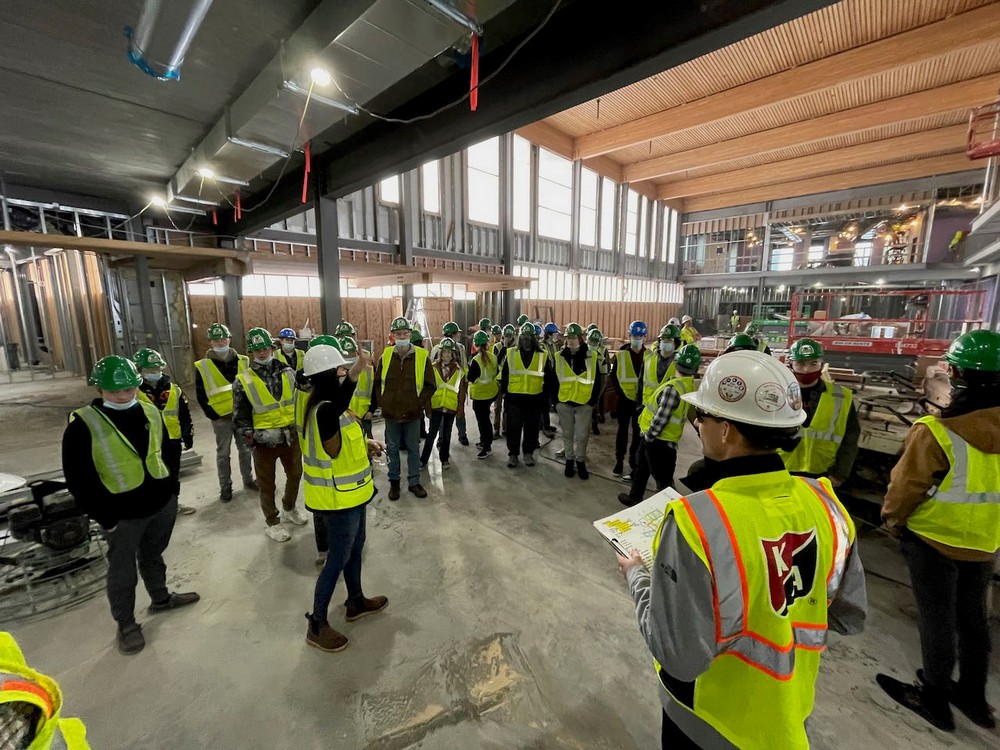
Career Academies provide learning opportunities, hands-on tech training
By Wade Engebretson
Not everyone in high school knows what they want to do with their lives or where they want to work. Even if a student wants to pursue a particular field of study, a traditional four-year degree may not turn out to be the right fit. In addition, the exorbitant costs and long-lasting debt may be too steep to consider. Yet today’s reality is the great majority of jobs require some post-high school education.
One creative approach to tap into a person’s individual interests and personalized skill set is through career technical education, which provides students with the academic and technical skills, knowledge and training necessary to become lifelong learners and to succeed in a variety of rewarding and satisfying careers.
As a superintendent, I oversee large-scale education projects for Kraus-Anderson Construction Company, a construction manager of K-12 facilities. As we plan and develop the construction of schools, we also work closely with school districts to prepare referenda for communities—and voters—to fund the multimillion-dollar projects. And, over the past few years, CTE programs have proved to be significant, results-oriented opportunities for a student’s growth and success, therefore becoming increasingly important to the tax-paying families. Today’s referenda feature CTEs as a relevant path that connects learning to the real world.
I grew up in northern rural Minnesota on the Iron Range and graduated from high school in 1986. Until that time, thankfully my school offered shop classes, which sadly have since been discontinued from most schools nationwide. However, my family owned a construction company and lumber yard so I knew I wanted to work in construction. After graduation, with no college degree, I called a local construction company my family did business with and asked if I could get a job there. I was lucky to have that connection.
That opportunity, which lasted 13 meaningful years, taught me so much about the construction industry. The experience, ultimately, helped me land a management job at Kraus-Anderson, where today, now in my 23rd year, I manage multimillion-dollar projects, which would not have been possible if not for beginning as an apprentice, learning a trade, and then working hard to develop a career.
While traditional CTE programs are extremely important, real-time building projects that teach skills and cultivate experience create a resume for students as they enter the workforce.
A model in practice: Rock Ridge Public Schools – Career Academy
One of the school districts that has developed such a forward-thinking CTE program is Rock Ridge Public Schools, located in northern Minnesota in the heart of the Iron Range, where mining historically has been the backbone of the economy. Rock Ridge’s initiative is not like other CTE programs, but rather an intentional partnership with its local workforce and community stakeholders to create a Career Academy—a creative learning opportunity for students that rivals any curriculum and experience in the country.
Here’s how it works:

Implemented by Kraus-Anderson superintendents, project managers and project coordinators, the Career Academy model creates a collaborative learning environment that provides students with the knowledge and experience needed to immediately find good jobs and make a positive impact on the local workforce that demands training through CTE courses. The model at Rock Ridge High School provides career mentorship in the building design and construction industry, and offers students offsite, hands-on experiences in various CTE fields of study.
The program first focuses on tours of different jobsites so students can be introduced to skills needed in various areas of construction, such as engineering, architecture, estimating, carpentry, ironwork and others. In addition to construction, the tours also expose students to assorted careers, including manufacturing, healthcare, mining, marketing, culinary and the trades.
Next, the academy uniquely features actual hands-on building projects at the high school where students learn how to plan and design, learn about site safety and actually construct projects on the school’s campus. One example at Rock Ridge includes building press boxes, multiple dugouts and storage buildings at the district’s athletic facilities, as well as a wetlands observatory deck at the high school.
The Career Academy is so significant that the contractors’ agreement with the district includes dedicated time to work with the students on these builds.
“This is not a traditional shop class,” said Dr. Noel Schmidt, superintendent of Rock Ridge Public Schools. “Under the supervision and guidance of the subcontractors, the students are learning specific skills, while constructing real, tangible projects that are not only helping to build our schools, but helping to build our students’ futures.”
Finally, these eager young people are introduced to companies and leaders in the CTE employment ranks. Just like I had a connection to construction employment when I was a graduating senior in 1986, the Career Academy students are meeting local business leaders who can be a bridge to employment and careers.

The program has made an incredible impression on students. It has opened their eyes to what is possible.
“Equipped with invaluable experience and networking, the academy model helps students make educated decisions about their futures,” said Willie Spelts, director of school to work engagement for Rock Ridge Public Schools.
These young people—and their families—tell us the education they are receiving is exactly what they hoped would happen when the academy model was first being explored and discussed: that the Career Academy has fully introduced and prepared them for professions in the CTE fields, while staying out of major college debt.”
Construction companies engaging students for tomorrow’s success
I encourage superintendents, project managers and construction company leaders to work with their school districts and partner with local workforces to create similar academies—a dynamic trend in education construction. Promote Career Academy models led by the district, coordinated by the construction managers and supported by their subcontractors.
A Career Academy is a team sport. It takes many people—at many community levels—who all share the same outcome: help our young people succeed without carrying mounds of debt, while filling needed jobs. I promise it will make a demonstrative difference in the lives of students, their families and their communities.
Wade Engebretson is lead superintendent at Kraus-Anderson Construction. He can be reached at wade.engebretson@krausanderson.com.



 Join our thriving community of 70,000+ superintendents and trade professionals on LinkedIn!
Join our thriving community of 70,000+ superintendents and trade professionals on LinkedIn! Search our job board for your next opportunity, or post an opening within your company.
Search our job board for your next opportunity, or post an opening within your company. Subscribe to our monthly
Construction Superintendent eNewsletter and stay current.
Subscribe to our monthly
Construction Superintendent eNewsletter and stay current.